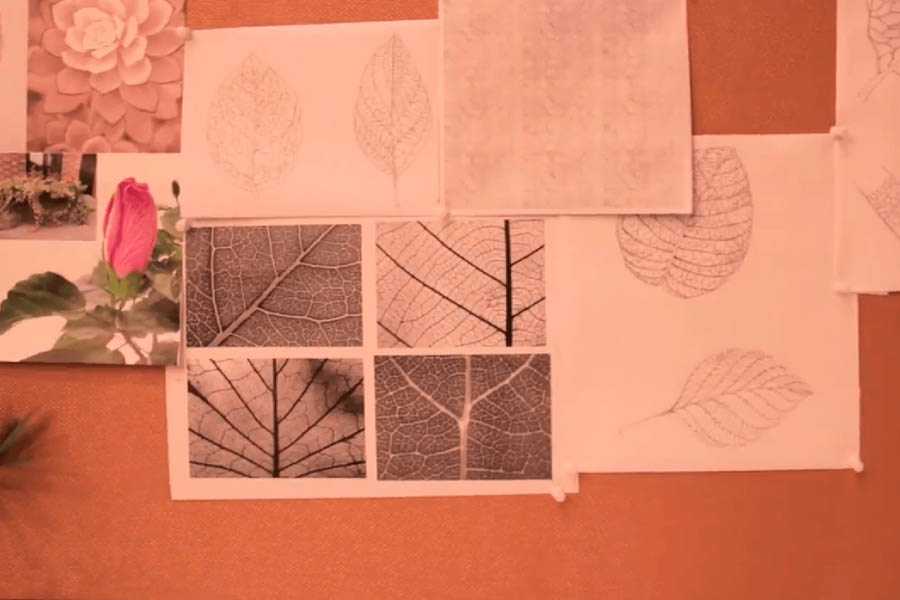From design to drape
How is the silk saree you cherish made? From designing to weaving, it’s a captivating creative journey that combines the best of two worlds: technology and tradition.
Ideation:
The process starts with knowledge sharing and brainstorming to come up with the best design. Every minute detail of the design is discussed thoroughly, inch by inch: what are the motifs on the saree, how much portion of the saree will be taken up by the motifs, what are the colours to be used etc.
The rough sketch then takes shape and goes through a series of steps, in which experts lend their touch to perfect the design. Utmost care is given to avoid errors.
Hand Draft:
The motif is graphed on a checkered sheet. Half the design is drawn on it. The various threads used in the pattern (zari, silk) are demarcated with different colours. Plotting the design on a graph paper gives the weaver a very clear idea of the threads involved in the weaving process. The graph paper usually has large boxes that facilitate easy understanding of the design.
Perforated Cards:
The motifs and patterns are then transferred onto cardboard cards. Using the graph as a reference, holes are punched along the outline of the design on the cards. These cards guide the weaver through the process of breathing life into the design. They help the weaver understand which colour thread has to pass through which card and when. Even for a small design, hundreds of punched cards are needed!
Designs of the loom:
These perforated cards are then placed in the loom, which already has the warp and weft in place. Once the weaving starts, the designs appear accordingly. The right coloured threads go in and come out of the punched holes, according to the pattern. Once the saree is finished, one can see the entire design.
The weaving journey:
It starts with the winding of yarn on a warp beam. The silk yarn is turned into warp sheets by rolling the yarn with an iron rod. The warp sheet is then transferred onto a beam. The yarn strands pass through reeds and healds. Each strand is joined with the old warp thread manually. The joining process is followed by weaving on a raised fly shuttle pit loom, wherein the silk threads of the weft and warp are interlocked. The woven cloth is wound around the wooden beam. After weaving six metres of the weft, the unwoven warp is knotted to form the fringes. The unwoven stands are cut out. Then the saree is folded in a traditional manner before being sent to the stores. It takes about 4-5 days to weave a saree; some sarees take longer.
Kanjivaram silk sarees are woven from pure mulberry silk thread. The body and border are woven separately and then interlaced together (korvai). Three shuttles are used to weave the timeless Korvai kanjivaram silk. The joint is so strongly woven that even if the saree tears, the border will not detach itself. The border colour is usually in contrast to the body colour. If the pallu is in a different shade, it is woven separately and then joined carefully to the saree. This special interlinking weave is known as ‘pitni.’ The place where the body meets the pallu has a zig-zag line.
Finally, after several days of intense ideation and painstaking labour, the stunning work of art is ready to be draped.




